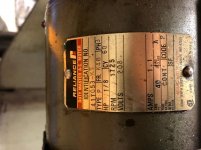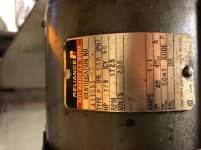Ltk
Aluminum
- Joined
- Sep 24, 2021
I have searched through some threads and did find some articles about running a 208v machine on 240v with some conflicting responses, but none that matched my specific problem.
The machines motor itself is wired 208v, the power-feed on the long axis of the table is a 208v Reliance motor. The previous owner had connected the leads from the drum switch to the power feed motor in the back of a 110v receptacle, I am not sure how they had wired the main power into this or if this is even a proper way to do it?
Black cable is going to the powerfeed, gray goes to the drum switch on the head. Any help would be greatly appreciated. Do I need to purchase a motor starter or just wire into this mess?




The machines motor itself is wired 208v, the power-feed on the long axis of the table is a 208v Reliance motor. The previous owner had connected the leads from the drum switch to the power feed motor in the back of a 110v receptacle, I am not sure how they had wired the main power into this or if this is even a proper way to do it?
Black cable is going to the powerfeed, gray goes to the drum switch on the head. Any help would be greatly appreciated. Do I need to purchase a motor starter or just wire into this mess?






